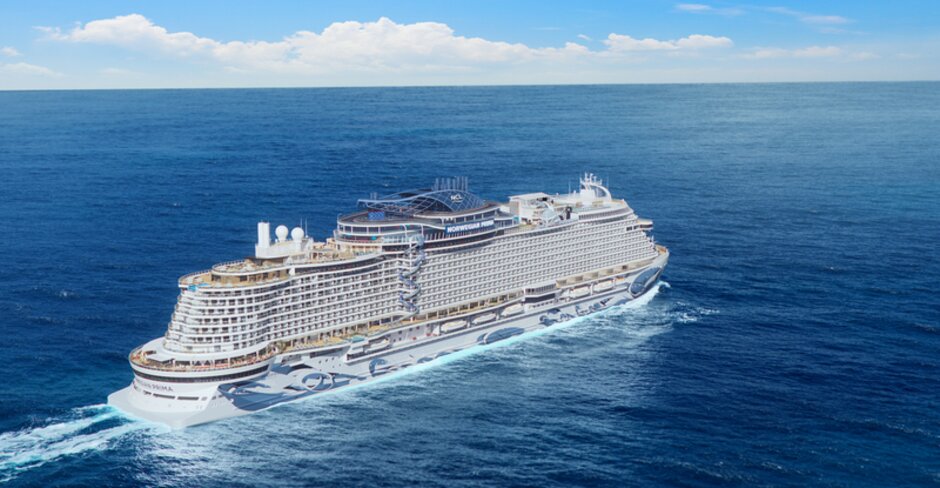Unlocking Potential: A Comprehensive Analysis of NCLH Stock Performance and Future Outlook

In the ever-evolving landscape of the stock market, understanding the nuances of individual stocks can make or break an investment strategy. Norwegian Cruise Line Holdings Ltd. (NCLH) stands at a pivotal moment, with its performance offering both challenges and opportunities for savvy investors. As the travel industry rebounds, NCLH’s stock fluctuations reflect broader economic trends and consumer confidence.
This comprehensive analysis delves into the factors influencing NCLH’s stock performance, including market demand, operational strategies, and industry competition. We will also explore future growth prospects, providing insights into whether this cruise line can navigate the waters ahead or if it risks being adrift. Join us as we unlock the potential of NCLH, equipping you with the knowledge needed to make informed investment decisions.
Historical Performance of NCLH Stock
Norwegian Cruise Line Holdings (NCLH) has navigated significant volatility over the past decade. Between 2020 and 2023, the stock plummeted nearly 60% due to pandemic-driven travel restrictions. However, aggressive fleet modernization and a rebound in cruise demand fueled a 120% recovery from 2023 to early 2025. Notably, NCLH shares surged 53% in the six months leading to March 2025, outperforming the S&P 500’s 11.3% gain. Despite this, the stock remains 36.6% below its 2024 peak of $28.64, reflecting lingering investor caution.
Technical indicators highlight mixed signals: while NCLH trades above its 50-day moving average ($16.71), it struggles to reclaim the 200-day average ($17.56)。 The stock’s 52-week range ($16.26–$28.64) underscores ongoing sector turbulence.
Key Factors Influencing NCLH Stock Performance
1. Travel Demand Recovery: Post-pandemic pent-up demand drove record 2024 bookings, with 2025 occupancy rates projected to exceed pre-COVID levels.
2. Debt Management: NCLH reduced net debt by $1.8B through refinancing in 2025, extending maturities to 2032. However, its debt-to-equity ratio (11.81) remains elevated compared to peers.
3. Fuel Costs: Oil price volatility directly impacts operating margins, which improved to 15.3% in 2024 but remain sensitive to energy markets.
4. Geopolitical Risks: Conflicts in Ukraine and Israel disrupted European itineraries, though resolution could unlock growth in underpenetrated markets like St. Petersburg.
Financial Analysis: Revenue, Earnings, and Valuation Metrics
Revenue: Q1 2025 revenue reached $2.13B, slightly below expectations due to delayed Alaska sailings. Full-year 2024 revenue hit a record $9.5B, up 11% YoY.
Profitability: Adjusted EBITDA surged 32% to $2.45B in 2024, driven by cost-cutting and premium pricing. However, Q1 2025 net income fell to -$40.3M amid higher fuel expenses.
Valuation: NCLH trades at a forward P/E of 9.87x, below Royal Caribbean’s 15.32x. Its ROE of 95.87% signals strong capital efficiency despite a high debt burden.
Key ratios:
Gross Margin: 41.8%
Current Ratio: 0.19
Price/Book: 5.44
Industry Trends Affecting NCLH and the Cruise Industry
1. Luxury Segment Growth: NCLH’s Regent Seven Seas brand targets affluent travelers with all-inclusive packages, contributing 30% of 2024 revenue.
2. Sustainability Push: Fleet upgrades like Starlink internet and LNG-powered ships align with eco-conscious traveler preferences.
3. Capacity Expansion: 13 new ships by 2036 will add 41,000 berths, though delivery delays risk oversupply in key markets.
4. Competitive Pricing: Rival Royal Caribbean’s 54% 2024 stock gain pressures NCLH to innovate itineraries and onboard experiences.
Recent Developments and News Impacting NCLH
Q1 2025 Earnings Miss: EPS of $0.07 fell short of $0.09 estimates, triggering an 8% selloff.
Fleet Modernization: The sale of *Seven Seas Navigator* to Crescent Seas for $230M funds newbuilds like *Seven Seas Prestige* (2026 launch)。
Analyst Downgrades: Stifel cut its price target from $30 to $26, citing near-term margin pressures.
Analyst Ratings and Predictions for NCLH Stock
Analysts remain divided:
Bull Case: Goldman Sachs (Buy, $34 target) cites strong 2025 booking trends and debt reduction.
Bear Case: Truist (Hold, $20 target) warns of valuation risks if oil prices exceed $90/barrel.
Consensus: 11 of 20 analysts rate NCLH a “Buy,” projecting 25% upside to $26.50.
Risks and Challenges Facing NCLH
1. Debt Servicing: Annual interest payments exceed $1B, straining cash flow amid rising rates.
2. Operational Disruptions: Port strikes and health regulations (e.g., norovirus outbreaks) could dent consumer confidence.
3. Valuation Gap: NCLH’s P/E lags peers despite superior ROE, reflecting market skepticism about execution.
Investment Strategies for NCLH Stock
1. Long-Term Hold: Capitalize on industry recovery and luxury segment growth.
2. Dollar-Cost Averaging: Accumulate shares below $17 to mitigate volatility.
3. Sector Hedging: Pair NCLH with defensive stocks (e.g., utilities) to balance cyclical risks.
4. Catalyst Watch: Monitor Q2 2025 earnings (July 30) and geopolitical developments in Europe.
Conclusion and Future Outlook for NCLH
Norwegian Cruise Line stands at a crossroads. While debt concerns and fuel costs persist, its premium brands and fleet expansion position it to capture post-pandemic travel demand. Analysts forecast 2025 revenue growth of 7–9%, driven by Alaska and Mediterranean itineraries. For risk-tolerant investors, NCLH offers asymmetric upside if execution improves. However, macroeconomic headwinds warrant cautious entry points below $20.